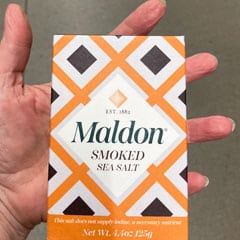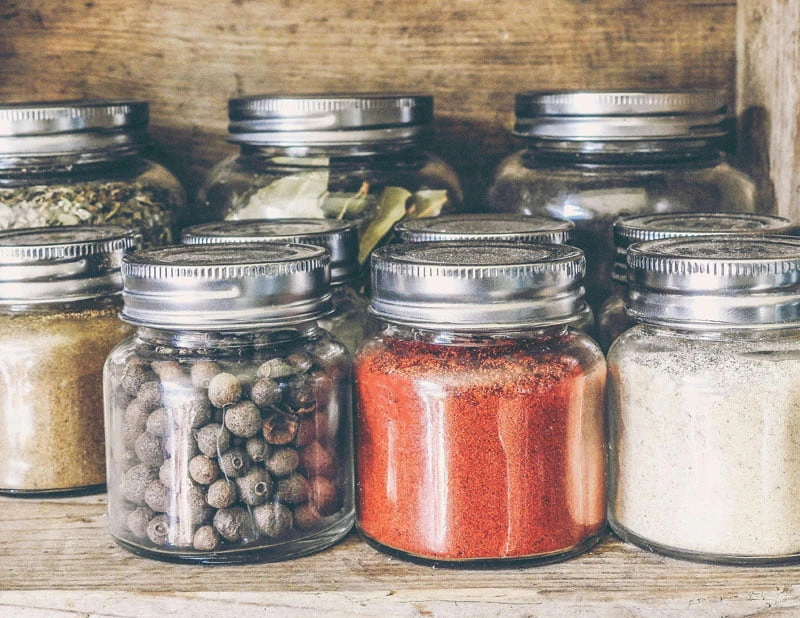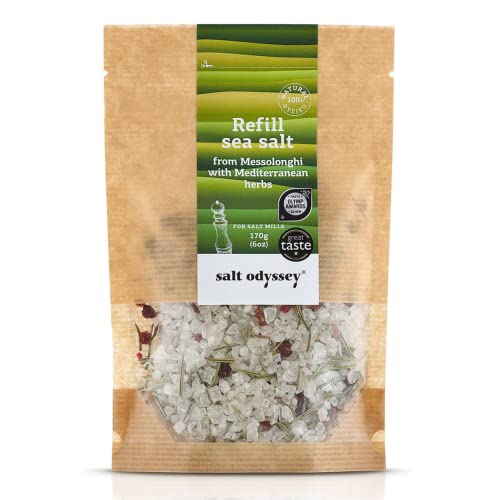Salt is a staple ingredient in most kitchens, and it is hard to imagine cooking without it. It is used to enhance the flavor of food, preserve it, and add texture to baked goods.
From kosher salt to sea salt, black salt to fleur de sel, there are many types of salt available, each with its unique flavor, texture, and mineral content. Chefs and food enthusiasts have been experimenting with different types of salt to add depth and complexity to their dishes.
Is Salt A Spice?
Though salt is an essential ingredient that can elevate the flavor of any dish, it is not considered a spice since it is not plant based.
What Defines A Spice
Spices are defined as any dried part of a plant, other than the leaves (that gets into the subject of ‘herbs’), used for seasoning and flavoring a dish. This can include seeds, fruits, roots, or bark. Spices are often used in small quantities to add flavor and aroma to a dish.
Here is a dictionary definition:
a plant product (such as pepper, nutmeg, cinnamon, or ginger) that is used to season or flavor foods and is usually comprised of seeds, fruits, bark, or rhizomes that have been dried and typically ground
While salt is a mineral that is often used to enhance the flavor of food, it is not considered a spice because it does not come from a plant. Salt is extracted from salt mines, salt deposits (think of the Great Salt Lake near Salt Lake City, Utah) or from evaporated seawater.
What Defines An Herb
When it comes to culinary terms, an herb is generally defined as the leafy green or flowering parts of a plant that are used for flavoring or medicinal purposes. Herbs are typically used in small amounts to add subtle flavor to dishes, and they are often associated with fresh, light, and healthy cuisine. So as essential as it is to food, salt is also not an herb.
The Role Of Salt In The Culinary World
Despite not being classified as spice or herb, salt plays a crucial role in the culinary world. It is used to enhance the flavor of food, balance out sweetness and acidity, and preserve food. In fact, salt has been used for thousands of years as a method of preserving food, and it is still widely used for this purpose today. It can make the difference between a bland & boring food dish and one that has flavor that ‘pops’!
What Is Salt?
Salt is a mineral substance that is composed mainly of sodium chloride (NaCl) and is commonly used as a seasoning in many types of food. Salt is considered an essential ingredient in the culinary world because it enhances the flavor of food and helps to bring out and balance other flavors.
Depending on the type of food, salt can be used in different ways. For example, in baking, salt is used to enhance the flavor of the dough or batter. In savory dishes, salt is used to enhance the overall flavor of the dish, and in sweet dishes, it can be used to balance the sweetness of the dessert.
Salt is also used as a preservative to prevent the growth of bacteria and other microorganisms in food. This is because salt draws out moisture from the food, making it less hospitable for bacteria to grow. The most common food preservation process that uses salt is Pickling. The topic of “what is salt?” goes beyond common table salt or even culinary salts – read more about that in the imaginatively title article: What Is Salt?
The Taste of Salt
Salt is considered one of the five major ‘tastes’ that is used to draw out the flavor of dishes it’s added to. Flavor and taste are often used interchangeably, but they are different concepts.
The flavor of a dish is made up of several elements, including taste, aroma, texture, and temperature. Salt contributes to the taste of a dish, specifically the salty taste.
The salty taste is one of the five basic tastes that the human tongue can detect. The other four tastes are sweet, sour, bitter, and umami.
Although salt is not a flavor, it is an essential component of a dish’s overall taste profile. Salt helps to balance and enhance the other flavors in a dish, making them more prominent and enjoyable. It also helps to bring out the natural flavors of the ingredients in a dish, making it taste more delicious.
In the culinary world, salt is often used in conjunction with other flavors to create a harmonious taste profile. For example, salt is often paired with sweet flavors to create a balanced taste. It is also used in savory dishes to enhance the other flavors and add depth to the dish.
Overall, salt is an important ingredient in the culinary world, and it is considered a taste rather than a flavor. It helps to balance and enhance the other flavors in a dish, making it more delicious and enjoyable.

Blurring the Spice / Salt Boundaries
In recent years it has been easier and easier to find delicious mixes of pre-blended salt, spice and herb mixtures. These go way beyond the generic ‘seasoning salt’ in the plastic shaker jar! The gourmet choices start with some type of quality sea salt or pink Himalayan salt, then blend in chili flakes, garlic, rosemary, thyme, or other herbs to make a taste sensation. Some are designed so that you can put everything in the mixture in a ceramic grinder, making it simple to disperse salty and herby goodness over your hash browns, soups or whatever you are cooking up! Here is a link to my current favorite blend:
This mixture of Grecian Sea Salt, Rosemary, Oregano, Dried Tomato and Red Pepper flakes is the current reigning 'salt star' in my personal kitchen. The pieces in this mix are fairly coarse, so I put this mix in a ceramic grinder to top off whatever I am cooking or serving. Comes in a package of 170 grams (a little over 6 ounces).
Frequently Asked Questions Regarding Salt Names & Labels
Here are some terms that often accompany the word ‘salt’ in the culinary world – along with some definitions.
What is Iodized Salt?
Iodized salt is a good source of iodine, which is important for thyroid function. It is considered necessary for a nutritious diet. While iodine can be found naturally in some sea salts, most Iodized salt has had Iodine added in the manufacturing process. Other sources of iodine include seafood, dairy, and eggs. Learn more about Iodized Salt in this article: Details On Iodine In Himalayan Salt: What You Need To Know.
For a table comparing the amount of iodized salt in a serving to other iodine-rich foods, see The Importance of Iodized Salt.
Does mineral content in salt need to be listed on the label?
Only Sodium content is required by law to be listed on the Nutrition Facts panel. Some salt producers may choose to list other minerals such as magnesium or calcium if the salt has a significant amount of such minerals.
It’s interesting to note that if a product is a sold as a single ingredient, it is sometimes exempt from needing to list Nutrition Facts. For example, ‘pure sea salt’ with absolutely nothing added might not have the facts panel.
Is it legal to label salt as “organic”?
No – the word “organic” relates to products that are grown (agricultural). Salt is a mineral, so the word organic is meaningless. There are USDA organic regulations that control this type of labeling.
What does “natural salt” mean on a label?
The term “natural salt” is not regulated, so it pretty much can be considered a marketing term. It might mean that the salt is unrefined, minimally processed or that no additives have been introduced. The best thing to do is to read the rest of the label for more information.
By the way, the same thing goes with terms like “artisanal” or “hand-harvested” salt. Those are marketing descriptions.
What Is the difference between refined and unrefined salt?
Refined salt has been processed to remove impurities and minerals. Salt that is produced through brine or vacuum extraction would be an example. Unrefined salt is typically produced via solar evaporation (salt pans) and usually retains any trace minerals.
What is Finishing Salt?
Finishing salt is a type of salt that is added to food just before serving to enhance the flavor and texture of the dish. It is typically placed on top of the food in small quantities. It tends to be characterized by having a lot of surface area and is visibly flaky or crystallized.
Can salt be labeled as “gluten-free” or “vegan”?
Yes – but these terms are true of all Sodium Chloride. Salt is a mineral, so it does not have gluten (often from wheat). Vegan means that it is free of animal products (meat, dairy).
What Is Maldon Salt?
Maldon salt is a specific type of sea salt that is known for its unique pyramid-shaped crystals and delicate flavor and is usually used as a finishing salt. It is named after the place it was found naturally occurring: Maldon, England.

Maldon also is now a brand, which primarily sources many of their products from Maldon salt deposits. They offer plain (unflavored) salt, plus at least three flavored salts like this Smoked variety.
Final Thoughts
While we don’t consider salt a spice, it is clear that this ingredient plays a significant role in the culinary world. Its value extends beyond just adding flavor to dishes, as it also affects the texture and overall presentation of a meal.
From cooking to baking to finishing, salt has its place in every step of the recipe. Different types of salt can bring out unique flavors and minerals, and the size and shape of the crystals can affect the texture of the dish.
Table of Contents
Featured Image: Photo by monicore. Salt, Garlic & chilies: Photo by Los Muertos Crew.








